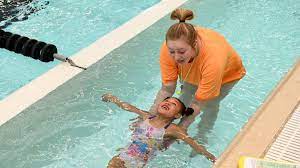From Bondi to Busselton, Australians spend more time around water than most people on Earth. It’s part of who we are—school swimming carnivals, beachside holidays, and backyard pool parties are stitched into everyday life. But water isn’t always fun and games. Each year, drownings and near misses remind us that safety can’t be left to chance.
That’s where the water safety code comes in. It’s a simple yet powerful set of rules that guides how we behave around water—whether you’re swimming, supervising, or just nearby. Understanding and applying the water safety code is a critical part of any certified water safety course, and it’s something every Australian should know by heart.
Why a Water Safety Code Matters
The water safety code isn’t just a checklist—it’s a mindset. Its purpose is to help people of all ages identify risks, make smarter decisions, and act quickly when needed.
Whether you’re wading in a creek, kayaking offshore, or teaching kids to swim, the water safety code creates a foundation for safer choices. Most drownings happen in everyday situations, often involving people who didn’t expect to be at risk.
It’s why water safety education starts early in Australia, and why swim instructors, carers, and lifeguards drill the code into every lesson and training session.
So, What Is the Water Safety Code?
The standard Australian water safety code includes four simple rules, sometimes referred to as “Stop, Look, Plan, and Stay Afloat.” These steps are easy to remember and apply across every aquatic environment.
1. Stop and Think
Before entering the water, take a moment. What’s the setting? What’s the weather doing? Is the water deep, cold, or fast-moving? Are there signs warning of danger?
This first step is about awareness. The goal is to pause and scan for anything that could pose a risk. Many accidents occur because people jump in without realising what they’re dealing with.
2. Look for Dangers
Water can hide hazards—currents, rocks, sudden drop-offs, or marine life. Even in a calm-looking pool, things like slippery tiles or missing drain covers can be serious.
Look carefully:
- Is there lifeguard supervision?
- Are children nearby?
- Has the water been checked recently?
- Are other people behaving recklessly?
This step reminds us that danger isn’t always obvious, and it’s our job to check—not assume.
3. Plan to Stay Safe
Once you’ve assessed the situation, have a plan. If you’re supervising children, will you be within arm’s reach? If you’re in open water, are you swimming with a buddy? If boating, do you have a lifejacket?
This part of the water safety code is about being prepared, whether that’s having emergency equipment, knowing your limits, or choosing a safer activity.
It’s also where education plays a major role. Completing a water safety course gives you the tools to plan more effectively—especially in group or instructional settings.
4. Stay Afloat and Signal for Help
If things go wrong, staying calm can save your life. Knowing how to float, signal for help, and conserve energy increases your chance of being rescued.
Floating isn’t just for young children. It’s a vital survival skill, especially in open water where waiting for help is likely. Every qualified swim teacher knows that floating and treading water should be taught before full strokes.
Learn more about the National Water Safety Strategy and how the water safety code fits into Australia’s goal to reduce drowning by 50% by 2030.
How the Water Safety Code Applies to Daily Life
Let’s say you’re at a regional dam with your family on a hot weekend.
- You stop and think before walking into the water, remembering last week’s rain and wondering about submerged hazards.
- You look for dangers—floating logs, murky water, and no signage or designated swim zone.
- You plan to stay safe by deciding to keep your children in a shallow, enclosed inlet and stay within arm’s reach at all times.
- When your nephew drifts out too far and panics, he remembers to roll onto his back, stay afloat, and wave his arm.
These small actions—each based on the water safety code—can prevent panic, delay, and worst-case outcomes.
Why It’s Core to Every Water Safety Course
A formal water safety course teaches the code not as theory—but through application.
You’ll learn how to:
- Conduct site risk assessments before lessons or activities
- Use the code to train kids, teens, and adults in everyday settings
- Reinforce the code with signage, supervision strategies, and group communication
- Practice floatation, rescue, and CPR in real scenarios
The goal isn’t to memorise a script. It’s to make the code second nature, so it shapes your decisions instinctively.
Who Needs to Know the Water Safety Code?
The short answer: everyone.
- Parents and carers: To keep kids safe in backyards, baths, and holidays
- Teachers and swim instructors: To embed safety into every lesson
- Teenagers and adults: To recognise when they’re out of their depth
- Outdoor leaders and coaches: To manage group safety in camps or activities
- Everyday swimmers: To assess risks and react calmly
From a toddler’s first swim to an instructor managing 30 kids in a pool, the code stays relevant—and powerful.
Final Thoughts
So—what is the water safety code? It’s a four-step guide to safer decisions and calmer reactions: Stop and think. Look for danger. Plan to stay safe. Stay afloat and signal for help.
These aren’t just lessons—they’re habits that save lives.
Whether you’re supervising kids, planning a beach day, or preparing to teach your first swimming class, starting with a structured water safety course gives you the confidence to lead by example. Because water should be enjoyed—but always respected.

